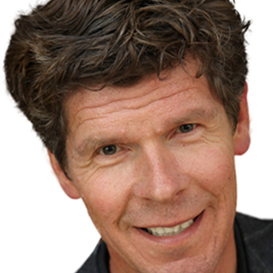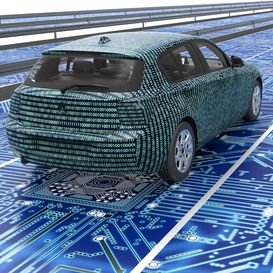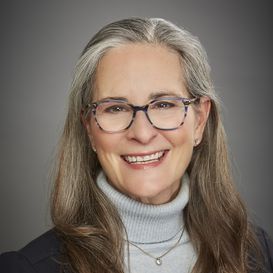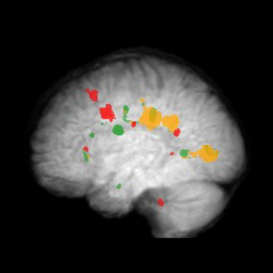
Advancing gender equality in innovation
Insights for ITEA from Vinnova
As Sweden’s innovation agency, Vinnova provides funding for research and innovation projects that benefit society and contribute to sustainable growth. This gives them a broad assignment, including the integration of gender-equal perspectives into research and innovation – a task that ITEA is keen to implement more in its own activities. To learn from their experience, ITEA Office Director Jan Jonker invited Susanne Liljeblad and Sophia Ivarsson of Vinnova for a discussion on (gender) equality, diversity and inclusiveness.
Understanding innovation

“Susanne and Sophia, welcome to this session on topics that are increasingly important to ITEA,” begins Jan. “We would like to promote them by organising activities to get more insight, depth and opportunities that we can use to apply these topics. We’re very happy that you were both able and willing to join us today.”
On the subject of inclusiveness, Sophia and Susanne offer complementing expertise: Sophia has a background as a gender researcher and heads Vinnova’s Gender, Diversity and Inclusion Strategy, while Susanne serves as a programme manager for Sweden’s involvement with ITEA and other Eureka Clusters. Sophia kicks off proceedings with a short introduction on why gender equality matters to the innovation agency.
“Gender equality is crucial to social sustainability. It has its own goal in the Sustainable Development Goals, but it’s also mainstreamed throughout them, which increases the chances of contributing to the SDGs in general. We also have six general Swedish gender equality goals that we – as a society and as the labour market, the government and the municipalities – have to deliver on, so it’s more sustainable to integrate the gender dimension into the content of the research and innovation projects that we finance. We see that this increases the relevance of the projects. The Swedish innovation system consists mostly of men and maledominated sectors and if we only focus on this, we narrow our understanding of innovation and where the innovation potential lies.”
“I think that people are aware of the factors that Sophia explained but it’s a structural problem that goes back to how we raise our children and biases that we have in our society,” notes Susanne. “You see that boys and girls are equally interested in technical education and science when they are young, but at university, there are fewer women in technical studies. Also, when it comes to the workplace, it’s important to show that you have successful women in tech and equal representation in boards and projects. When it comes to innovation projects, we want women to participate in order to get different perspectives and create better innovations!”
Who, what, how

“If I look at ITEA and my experiences within the ITEA Steering Group specifically, the notion of equal rights, responsibilities and opportunities for both sexes is there. That’s already a great achievement that is maybe not always as evident everywhere. You are bringing this topic to the agenda, and it creates extra awareness. Keep on doing that. You have a large reach, so you can pay some special attention to gender equality through your social media, through the website, but also through events like the PO Days and customer workshops. Keep up the good work!”
- Asli Tanriverdi, Director Public-Private Partnerships at Philips and member of the ITEA Steering Group
Of course, these issues extend far beyond Sweden; the European research framework as a whole has shifted to place ever more emphasis on diversity and inclusion. Horizon Europe, for instance, has introduced a mandatory gender equality plan for all actors seeking funding and uses a project’s gender balance as a ranking criterium. Sex and gender analyses of a project’s content are also compulsory in applying for Horizon Europe funding and are assessed as part of their excellence criteria. “So, there are a lot of reasons why making the Swedish innovation system good at working on these issues actually strengthens national competitiveness,” continues Sophia. “When we got our governmental assignment on this, we started to benchmark the Swedish innovation system. 80% of public research and innovation finance in Sweden went to men and male-dominated branches, which meant that we were not taking our responsibility to contribute to innovative solutions that are beneficial for the larger population. We have therefore worked with three focus areas: the who, what and how.”
- Who is the team composed of with regard to gender balance and the distribution of power and influence?
- What is the project’s potential to increase gender equality?
- How well have gender aspects
More concretely, the ‘how’ aims to ensure a 60/40 split in all assessment groups and a gender-aware assessment process. This seeks institutional change by ensuring that Vinnova itself is internally aligned with the gender goals that it requests of project teams. As for the ‘what’ element, a key change in the proposal template has been the introduction of a mandatory question on relevant sex and/or gender aspects to the project. If a consortium states that there are none, they must substantiate their answer.
Quantitative and qualitative
To demonstrate the impact of this change, Sophia turns to a project that was ongoing when the mandatory question was introduced. This aimed to address vibration injuries – the second most common work-related injury in Sweden – and the consortium initially assumed this to mainly affect male-dominated fields like construction. Upon facing the question when applying for funding in the project’s second stage, the team subsequently discovered that vibration injuries are widespread in dentistry, a female-dominated profession in Sweden. As a result, they could identify new types of vibration injuries and address the problem more effectively, thereby increasing their market reach and benefiting a larger demographic.
Sophia: “We were the first to bring this as a mandatory question. Before this, around 2% of applicants acknowledged gender aspects that they would address. After we asked the question, this rose to around 35% answering ‘yes’. Three years later, it’s now about 56%. We can have a lot of discussions on that. Is it good? Is it actually true or are they just answering ‘yes’ to increase their chances of getting funding? That makes the qualitative aspect of assessing their motives very important.”
“It could have been easy to just answer ‘no, we don’t have any gender impact’ but just talking about it and getting a larger awareness can make you think in terms of a gender impact of the solution being created in an innovation project,” Susanne says. “We have questions for this, but it’s also important that we talk about it generally and indeed also educate the evaluators that assess the applications.”
Stimulating, not forcing

“I think there is a lot of partnership spirit in ITEA, and this is good as in general women like to work in a more partnership-framed work environment where it isn’t just competition. This is also true for the idea of bottomup projects that ITEA shares which is very attractive for women. Regarding diversity, we are in the Steering Group an international group with people from many, many countries also working in even different countries: this makes it even more interesting. It feels like a Rubik’s cube with all the pieces in the right place. The mentoring that ITEA offers to the projects is also something that is definitely contributing a lot to diversity and to more women in science.”
- Maria Rimini Doering, Senior Expert Coordinator of Publicly Funded Projects and member of the ITEA Steering Group
Jan nods. “Indeed, by stimulating gender equality and having it as part of projects, it can have a snowball effect in awareness. I’ve been thinking about the fact that although the ITEA Community is very diverse, it is still mostly male-oriented. But there are some ingredients, like the international character and the bottom-up way of working, that should make it easier to start these processes. What do you think are some other aspects that could really improve the score of ITEA on diversity and gender equality? Do you see any assets within our Community that you think could really reinforce the topic?”
“In my opinion, you should add equality as an assessment criterion,” Susanne suggests. “And you should also make sure that you have more equal representation of men and women in the Board of ITEA, the Board Support Group and the different expert groups, because that’s where it starts. If you have 100% men in a cyber security support group, you might lose important input from women. Also, it would be good if you talk about gender equality at events, as well as making sure you have a good mix of men and women on stage. For instance, at the PO Days, you could add a section about gender equality in your session about how to write a good project outline.”
It’s a first step: educating people on why we should have this,” agrees Jan. “Not forcing it on them exactly but explaining what’s in it for them – what the good thing is about having gender-equal teams. Without it, you really miss out on opportunities to reach broader markets and get better innovations. Step by step, we can integrate this topic as a criterium or way of adding to the ranking of projects. I think it would be good to start with the positive parts and the gains that you get from it.”
Changing behaviours
“In addition to that, I can say that the ITEA Community – which is often referred to as the ITEA family – has a very informal and welcoming culture,” says Susanne. “And I would say that since you already have a focus on international cooperation and have included happiness as an objective, it’s a warm and positive environment. In that sense, it’s very inclusive. So, I think that you can add in training for assessors and strive to have a 60/40 balance in your groups with industry representatives. Also, Swedish ITEA projects are already evaluated according to a variety of gender aspects: how well the team is composed regarding gender distribution, the distribution of power and influence between women and men, how well gender issues were integrated into the project plan, and the potential of the results to contribute to increased equality. For now, you may want to have a stepwise approach but, in the end, I think that you also should add gender aspects to the evaluation of all projects. When speaking to ITEA projects – for instance, when going to reviews – there’s also often a high focus on the technical innovations and a bit less on the actual applications and the business use. I think that more women in the projects could also contribute to more of a focus on the applications and what the technical innovations are actually used for.”
Sophia uses climate-related sustainability as an illustration of this. “The fact is that women are usually more invested in behavioural changes that are beneficial for the climate and the environment. We see, for example, in one of our programmes on sustainable mobility that environmental footprints are mostly made by men. When you put a gender lens on this, we see that if more women were involved in changing travel behaviour, we could achieve a large percentage of certain climate goals.”
“And if you mention behavioural changes, you get into the field of social sustainability,” notes Jan. “I think that it’s also very interesting to review ITEA projects or innovation projects in general on their contribution to social innovation. This is something that we have started to take into account as well over the past years, next to the technical and economic results of innovation.”
Eagerness to improve

“From the start, we always had a feeling that everybody who joins ITEA, who is part of ITEA, should feel good and have equal opportunities. And I think we have always succeeded in that. And for me, the big evidence of this is that a lot of people in the Community talk about this ITEA family feeling. I’m sure that if gender equality was not in ITEA, if inclusion was not part of it, we would not have these remarks saying it’s a family.”
- Andy de Mets, Coordinator External R&D and Innovation Programmes at Barco and member of the ITEA Steering Group
In closing the conversation, Susanne and Sophia turn their attention to the steps that Vinnova takes when a field is simply too male-dominated to immediately build up gender-balanced groups. “If they say that they don’t have any women in the workforce, we require them to come in with an action plan,” explains Sophia. “During these years that they receive our money, we want them to have a plan on how to change this. We make them aware that they could maybe have a doctoral student from an underrepresented group or young researchers on the board, because these are ways that we can use the money to benefit beyond a very narrow, traditional group.”
“Projects shouldn’t settle for just a low number of women due to the fact that there’s only 20% women in tech, for example. I would encourage projects to be more eager to not see it as a given that there are few women and instead make a stronger effort to find women with the right competences,” Susanne concludes. “If you want to make a change, you should be striving to take the actions needed to do things differently.”
“If you want to make a change, it should be ambitious,” echoes Jan. “We’ve touched on quite a few topics here and there are some good takeaways from it it. Thank you both very much. With a stepby- step approach, ITEA can really do something more on this topic. With these good ideas, we can show the Community that it can gain a lot by strengthening gender equality and diversity.”
More information:
https://www.vinnova.se/
https://www.vinnova.se/en/m/equal-innovation/

Other chapters
Use the arrows to view more chapters

Editorial
By Jan Jonker

Country Focus: Austria
Tapping into innovative potential and using new knowledge for market growth

IT-V Medizintechnik
Achieving a better position in international innovation

ITEA Success story: PIANiSM
Pioneering predictive maintenance for a smarter future in manufacturing

Advancing gender equality in innovation
Insights for ITEA from Vinnova

ITEA Success story: EMPHYSIS
EMPHYSIS: Bridging the gap between digital simulation and embedded software with eFMI®

Community Talk with Jennifer Overbury
Smart project management in a technical domain

SME in the Spotlight: icometrix
Transforming neuroimaging with AI

End user happiness: Mad@Work
Digital solutions enhancing personal well-being and organisational success

